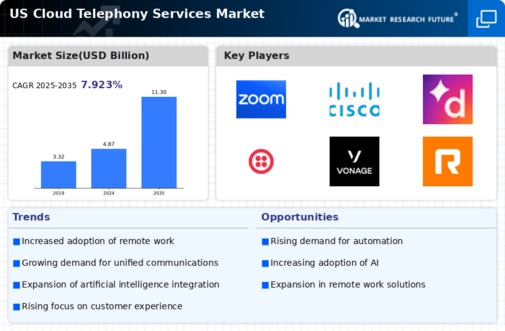The US Cloud Telephony Services Market has emerged as a dynamic sector offering diverse communication solutions to businesses of all sizes. It encompasses voice calling, messaging, and video conferencing services delivered over internet protocols. Competitive insights into this market reveal a diverse range of players, each striving to innovate and enhance connectivity for organizations. Factors such as technological advancements, customer needs for seamless communication, and the growing preference for remote work have intensified competition among cloud telephony providers.
As companies increasingly turn to cloud solutions for operational efficiency, understanding the competitive landscape becomes crucial for identifying opportunities and challenges within this segment. In the realm of cloud telephony services, Zoom has carved a notable niche, particularly due to its user-friendly interface and robust video conferencing capabilities. The company's presence in the US market is marked by a strong brand reputation, driven by accessibility and a commitment to customer satisfaction. With a platform designed to facilitate not only virtual meetings but also voice and messaging services, Zoom has effectively positioned itself as a leader in integrated communication solutions.
Its seamless integration with various third-party applications further enhances its appeal, making Zoom a preferred choice for businesses looking to improve collaboration and connectivity within their teams.
The company's strengths lie in its quick scalability, adaptability to user feedback, and continuous innovation, allowing it to cater to evolving market demands effectively.When examining 5.tel in the US Cloud Telephony Services Market, the company stands out for its comprehensive suite of telephony solutions tailored to meet specific business communication needs. 5.tel offers services such as VoIP, virtual phone systems, and unified communications, thus providing organizations with an all-encompassing approach to their communication requirements.
Its key strengths include strong customer support, flexibility in customization, and integration capabilities, which enable clients to enhance productivity and streamline their operations. 5.tel's strategic mergers and acquisitions have further expanded its service offerings and market presence, allowing the company to leverage advanced technologies and broaden its customer base. As businesses continue looking for reliable, efficient, and adaptable telephony solutions, 5.tel remains dedicated to providing innovative services designed to promote sustained growth and customer engagement in the US market.






















Leave a Comment